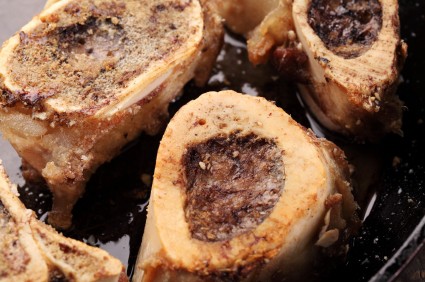Have you ever resisted a simple nutritional suggestion made by a trusted professional, for no particular reason? Ugh! I’m guilty as charged. My family has seen our clinical nutritionist for more than two years now, and I’m fairly certain she’s urged me to make my own bone broth from day one. I wouldn’t say I’ve ignored her suggestion entirely, but I will admit that I haven’t wanted to trouble myself with it. How important can making my own bone broth really be? After all, I can buy organic, grass-fed/pastured broth at the store. Talk about convenience!
I’ve known others who’ve raved about this magical elixir. Still, I resisted. Even though, according to the Weston A. Price Foundation, there are plenty of good reasons I should have immediately bought the ingredients and started cooking:
- Bone broth is highly mega-super-duper nutritious. The cooking process draws out all the minerals from the bones, including calcium, magnesium, and phosphorus.
- Gelatin in our food is extremely beneficial as a digestive aid. Bone broths have even been used to treat people suffering from intestinal disorders, such as Crohn’s disease.
- If you can’t—or simply don’t want to—buy a lot of meat, these gelatin-filled broths are a great, affordable substitute.
- The addition of these homemade broths to your current recipes will add tons of flavor that simply can’t be matched by store-bought versions—and will make you a star chef in the eyes of everyone you feed.
All good reasons, but I found my own reasons to continually delay:
- Depending on which kind of broth you choose to make, the ingredients will include things like knuckle bones, calf’s feet, chicken heads, and chicken feet. These don’t sound like the most appetizing items. And since I’d never worked with them before, they also seem a touch intimidating.
- Just like any other food you buy, it’s important to get the best quality bones available to make your bone broth. If possible, you should try to get bones from an animal that was raised in the healthiest environment possible: pasture-raised, grass-fed, and by a farmer using organic practices. The prospect of hunting down yet another highly nutritious, yet elusive, ingredient was daunting.
- It’s a time-consuming, labor-intensive process. First you roast the bones, skim off the scum, and simmer for 12 to 72 hours. Then you strain it, cool it, skim some more, and finally store it properly so that none is wasted. That lazy bone in my body just couldn’t be bothered.
Then the cool fall air hit our area, and I began craving soups. Technically, I can eat soup anytime, but there’s something about the crisp breeze of autumn that kicks my craving into overdrive. The thought of making my first batch of bone broths floated to the surface again. I’d done my research, reading Sally Fallon’s beef broth recipe in Nourishing Traditions, as well as in Eat Fat, Lose Fat, which she co-authored with Dr. Mary Enig. The process didn’t really seem that complicated after all. Sure, there were several steps, but I knew I could get good quality bones at a local butcher shop, and the rest was pretty basic. I found myself blurting out, “Why not?” And, in that same moment, I swear I heard our nutritionist cheer for joy.
Fast forward—the shopping, roasting, and first round of skimming is finished, and now the broth simmers. Oh, this is a wonderful step—my second favorite, I’d say. I decide to let my broth simmer for 24 hours, allowing myself a lot of time to breathe in the aroma. Several hours into the simmering, my kids arrive home from school. The first thing they say as they walk through the door is, “What smells so good?” A little later in the day, as I chat with our neighbor in her driveway, she asks, “Can you smell that? Someone is cooking something that smells amazing!” You see, it’s a gorgeous fall day and our windows are open, allowing the aroma to drift through the entire neighborhood. After claiming responsibility for the amazingness wafting from my kitchen, I tell my neighbor I’ll bring her some of the broth—an offer I may end up regretting for purely selfish reasons.
Now the broth is done, and I’ve savored my first cup. Straight up, nothing added. Oh, my. If smelling the broth simmer was my second favorite step, without a doubt my favorite is the tasting. I go back for seconds, this time with a bigger bowl. It’s warm, soothing and mmm…delicious. Our nutritionist was right. I should have been making this all along—and I promise I won’t forget again. Health benefits aside, this stuff is crazy tasty! Now that my resistance and intimidation has melted away, I can’t wait to give the chicken and fish broth recipes a try. Bone broth really is a big deal, and certainly worth the little bit of effort to make.
I won’t lie—there will probably still be times when I don’t plan ahead. I’ll find myself shamefully resorting to the time-saving, store-bought version. But when I’m out grabbing the convenience broth, I’ll also shop for the necessary ingredients to get another batch of the good stuff started.
What new-to-you, healthy food do you resist making? Maybe it’s finally time to get into the kitchen and make it. The results may surprise you.
Photo from iStock/MKucova



